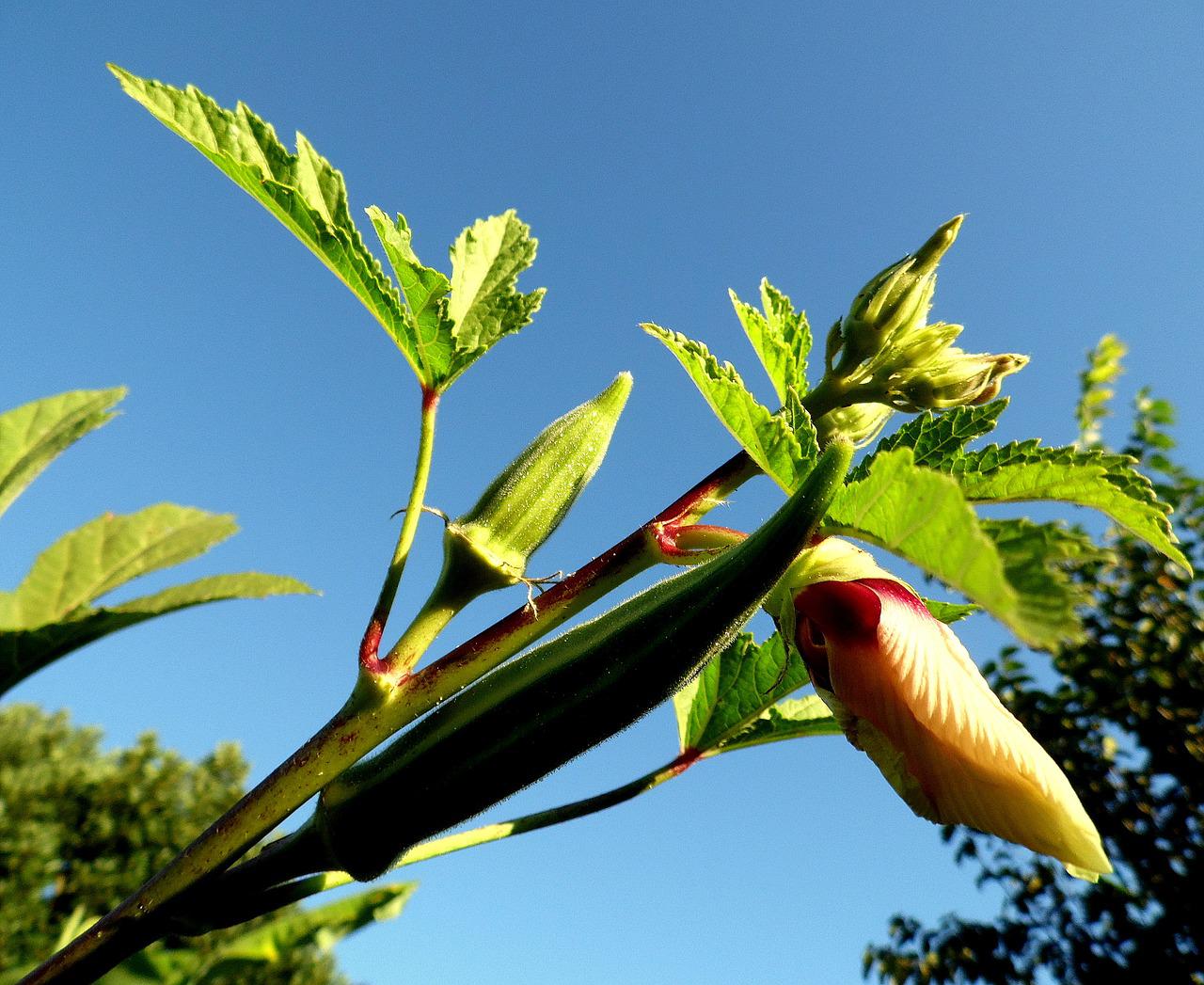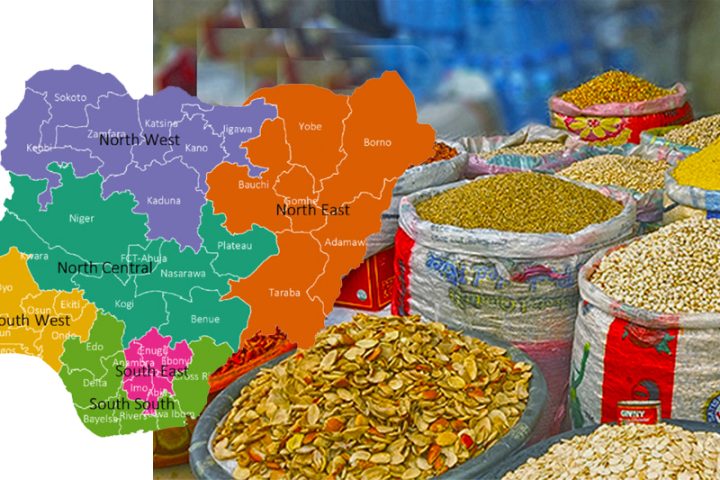It’s true: You can grow okra in your own garden even in extreme temperature conditions. Authorities such as WikiHow have confirmed that you can grow okra in your very own garden if only to enjoy its pods all-year long.
Join our WhatsApp ChannelOkra is can a cousin to the hibiscus as it has similar beautiful flowers, okra grows best in hot climates. Perhaps, this is the reason the vegetable is common in Africa and India. India is the largest producer of okra in the world. Okra is so popular in the country that it has various names virtually among the India locals. The names include: Bhindi (Hindi), Belendri(Manipuri), Vendaikkaai (Tamil), Bendakaya (Telugu), Vendakka (Malayalam), Bende kaayi (Kannada), Bhinda/Bhunda (Gujarati), Dherasa (Bengali), Bindu (Kashmiri), Bhendi (Marathi, Oriya).
However, as more peoples discover that okra is not bad afterall, “lady’s finger” is steadily heading northwards. So, even if you live in the Northern region, you can grow your okra indoors then transplant when the weather becomes warm.
Heard of the play-on-words, lady’s finger? That’s okra. It probably earned the name as it resembles the slender finger of a woman. The edible calcium-rich pods are used in soups, stews and curries.
Okra has slimy and sticky texture and tastes really good. It is one of the most popular vegetables consumed across every state in Nigeria especially when made as a soup. Depending on your choice, it is sometimes overcooked in the soup to enable you to enjoy its sliminess which actually makes ‘swallow’ glides down your throat, down to your stomach effortlessly.
No. You don’t want to know the botanical name of okra. Do you? Abelmoschus esculentus. It is from a family called, “Malvaceae.” Whoa!
Cultivating okra is best in hot weather. It grows best and fast too.
There is everything to grow okra for. You had read earlier that okra is a vegetable that continues to yield all-season long. That’s right – all season long! Harvest a pod and watch another grow in its place. It’s that magical!
Okra has got a lot of nutritional values and health benefits among which are:
- Okra can help prevent constipation
- It’s a source of fibre
- Okra is a great source of iodine which can help in treating goitre
- Eat okra to control cholesterol
- It can prevent diabetes
- Use okra as a weight loss therapy
- Okra is an excellent source of vitamin ‘A’,’B’, ‘K’ & ‘C
- It’s also low in calories for anyone who is dieting
- Eat okra to improve general immune power
See this bonus information from one Matt Harnick. He submitted this in the comment section of The Old Farmer’s Almanac: “Are you trying to use seeds from pods you bought at the store? If so, this will never work as pods used in cooking are immature and the seeds are not fully formed. If you want to grow Okra at all, you will have to beg or buy seeds from mature pods. A clue is that mature seeds should be round and dark-colored a bit like very tiny peas. If you were starting with white, flattened seeds, they were definitely immature. My own method for saving seed is to allow one or two pods to mature and dry on the plant near the end of the season. The pods turn brown and woody and when they split open, I collect the seeds. I hope this helps.”
Now grow okra in your own garden following these steps:
The planting process to grow okra in your own garden:
Determine your choice variety then plant your okra in fertile, slightly acidic, well-drained soil in full light. Suitable varieties include Annie Oakley, which produces spineless pods; Park’s Candelabra Branching which enjoys easy picking and Louisiana Green Velvet which is also spineless and good for big areas. Others include Quim Bombo, Asutem, Clemson Spineless, Labadi Dwarf etc.
Afterwards, prepare ridges or beds for your okra plants. You can also plant your okra at the border of main crop, making the layout same as main crop. Before then, prepare your soil. The land should be cleared removing trees, grasses and root stumps. Plough and plough, then harrow the soil to get a fine tilt. Okra does well in all kinds of soil even though it prefers sandy loam or clay-loam. Prepare the land by giving it five to six times ploughs adding enough compost manure and fertilizer to enrich the soil. Indeed, you can add the conventional fertilizer if your soil is not rich. But check the leaflet for the recommended quantity.
Soak seedlings for 24 hours. Gently break open your already soaked seedlings and sow. Water your plants after planting only if the land is somewhat dry and rain is not expected soonest. To help the soil absorb some warmth, cover with mulch a few days after.
As in other vegetables, you would need to water weekly, at least, even though it has the ability to survive even if you run into an extended dry period.
Irrigate and weed to successfully grow okra in your own garden
You need to water your plants at fixed intervals especially at flowering and fruiting stages. This will avoid a condition known as water stress which can cause stunted growth and poor yields in your okra plants. But please take care not to allow water touch the leaves. Magically, the water can burn the leaves, when the sun starts beating down on your plants.
During flowering, apply Sulphate Ammonia or Urea to enhance the plant’s nutrient requirement.
Like many other vegetables, your okra plant does not like competing with weeds. You therefore need to prune out weeds as they grow in order not to make your plant gasp for air and other nutrients. Control the weeds till your okra plant canopy forms fully. Weeding is not difficult. Use hoe and your hands to do so. But be careful so you don’t harm your plant roots. Do you have the means? Then employ some weedicides or herbicides too. Don’t forget to cover your plants surroundings with mulch after weeding. It helps to prevent a regrowth of the weeds.
To grow okra in your garden excellently, control diseases and pests
Note that as your okra plants grow, you may have to grapple with diseases and pests that commonly attack the crop.
Some major diseases of the okra plant include powdery mildew, leaf curl and mosaic. You will identify powdery mildew when you see a white dusty growth on the leaves. But control it by spraying with Sulphur-based fungicides and as well as weeding continually. Both leaf curl and mosaic are caused by Aphids and Whiteflies. Control? Use insecticides for this purpose. More importantly, if you are a smoker, it is best to avoid smoking or carrying cigarettes to the farm in whatever form. You can also rouge out affected plants early. In addition, practice crop rotation with healthy crops.
Common okra pests include Aphids, Diamond back moth Whitefly, Bollworm, Jassids among many others. You can pick them off with your hand. You can also prepare and spray the leaves with soapy water. This will keep the pests away. Also, control by applying pesticides like Neem seed extract. If you are disposed, kindly contact your local horticulture department for other measures of control. But please follow the manufacturer’s recommendations.
To harvest the okra grown in your own garden, see below:
One beautiful ‘hack’ in okra farming is that regularly harvesting or picking your pods actually increases the yield. That is, once you pick a pod, another grows in its place. Hence, okra can be harvested 2-3 times in a week.
Okra takes about 8 weeks after planting to mature. The pods should emerge by then. Start Harvest them. But do put on some hand gloves to avoid irritations from the spines-covered leaves and pods. Because of the spines, it is also advisable to do your harvesting in the cooler part of the day to avoid skin irritation. Cut or snap the pods carefully with your hands or scissors. Keep pods in a cool, dry place until later in the day(s) when you are ready to consume, gift or sell them.
Storage for the okra grown in your own garden
By now, you are wondering if you could store your vegetable since the consumption of okra likes it fresh. Yes, you can. You can pickle them using a salty brine just like you do to cucumbers. Pickling your okra will not only preserve its freshness but also its sliminess flavour for months. But pickle them immediately after harvesting for excellence. You can also store okra in the freezer. Just put the uncut and uncooked pods into bags and freeze.
Won’t you rather dive into growing okra in your own garden now?

















Follow Us